Related Research Articles
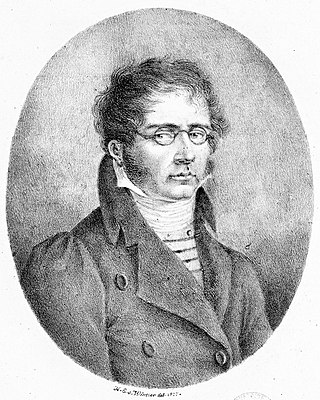
Franz Ignaz Danzi was a German cellist, composer and conductor, the son of the Italian cellist Innocenz Danzi (1730–1798) and brother of the noted singer Franzeska Danzi.
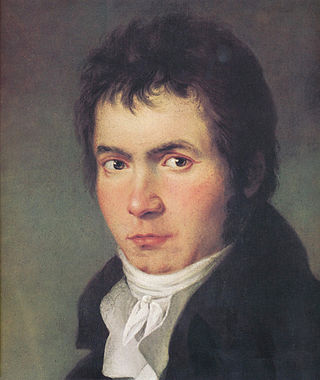
The Violin Concerto in D major, Op. 61, was written by Ludwig van Beethoven in 1806. Its first performance by Franz Clement was unsuccessful and for some decades the work languished in obscurity, until revived in 1844 by the then 12-year-old violinist Joseph Joachim with the orchestra of the London Philharmonic Society conducted by Felix Mendelssohn. Joachim would later claim it to be the "greatest" German violin concerto. Since then it has become one of the best-known and regularly performed violin concertos.

The Symphony No. 2 in D major, Op. 36, is a symphony in four movements written by Ludwig van Beethoven between 1801 and 1802. The work is dedicated to Karl Alois, Prince Lichnowsky.

Sergei Prokofiev wrote his Symphony No. 2 in D minor, Op. 40, in Paris in 1924-25, during what he called "nine months of frenzied toil". He characterized this symphony as a work of "iron and steel".
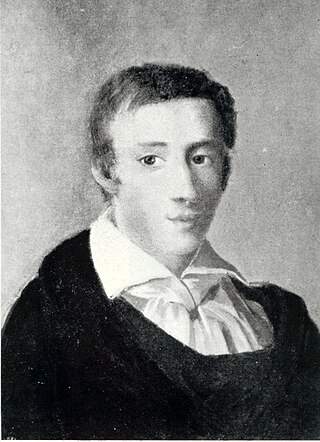
The Piano Concerto No. 2 in F minor, Op. 21, is a piano concerto composed by Frédéric Chopin in fall 1829. Chopin composed the piece before he had finished his formal education, at around 20 years of age. It was first performed on 17 March 1830, in Warsaw, Poland, with the composer as soloist. It was the second of his piano concertos to be published, and so was designated as "No. 2", even though it was written first.
Piano Concerto No. 3 in C major, Op. 26, is a piano concerto by Sergei Prokofiev. It was completed in 1921 using sketches first started in 1913.
Sergei Prokofiev set to work on his Piano Concerto No. 2 in G minor, Op. 16, in 1912 and completed it the next year. However, that version of the concerto is lost; the score was destroyed in a fire following the Russian Revolution. Prokofiev reconstructed the work in 1923, two years after finishing his Piano Concerto No. 3, and declared it to be "so completely rewritten that it might almost be considered [Piano Concerto] No. 4." Indeed, its orchestration has features that clearly postdate the 1921 concerto. Performing as soloist, Prokofiev premiered this "No. 2" in Paris on 8 May 1924 with Serge Koussevitzky conducting. It is dedicated to the memory of Maximilian Schmidthof, a friend of Prokofiev's at the Saint Petersburg Conservatory, who had committed suicide in April 1913 after having written a farewell letter to Prokofiev.

The Piano Concerto No. 2 in B-flat major, Op. 19, by Ludwig van Beethoven was composed primarily between 1787 and 1789, although it did not attain the form in which it was published until 1795. Beethoven did write a second finale for it in 1798 for performance in Prague, but that is not the finale that was published. It was used by the composer as a vehicle for his own performances as a young virtuoso, initially intended with the Bonn Hofkapelle. It was published in December 1801 as Op. 19, later than the publication in March that year of his later composition the Piano Concerto No. 1 in C major as Op. 15, and thus became designated as his second piano concerto.

Ludwig van Beethoven's Piano Concerto No. 1 in C major, Op. 15, was written in 1795, then revised in 1800. It was possibly first performed by Beethoven at his first public concert in Vienna on 29 March 1795. It was first published in 1801 in Vienna with dedication to his pupil Princess Anna Louise Barbara Odescalchi, known to her friends as "Babette".

The Piano Concerto No. 27 in B♭ major, K. 595, is Wolfgang Amadeus Mozart's last piano concerto; it was first performed early in 1791, the year of his death.
Sergei Prokofiev's Piano Concerto No. 4 in B-flat major for the left hand, Op. 53, was commissioned by the one-armed pianist Paul Wittgenstein and completed in 1931.

Sergei Prokofiev's Piano Sonata No. 8 in B♭ major, Op. 84 is a sonata for solo piano, the third and longest of the three "war sonatas", with performances typically lasting around 30 minutes. He completed it in 1944 and dedicated it to his partner Mira Mendelson, who later became his second wife. The sonata was first performed on 30 December 1944, in Moscow, by Emil Gilels.
An organ concerto is an orchestral piece of music in which a pipe organ soloist is accompanied by an an orchestra, although some works exist with the name "concerto" which are for organ alone.
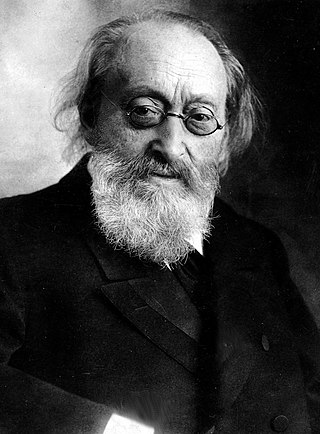
The Concerto for Clarinet, Viola, and Orchestra in E minor, Op. 88, is a composition by Max Bruch which was composed in 1911. It premiered on 5 March 1912 in Wilhelmshaven by the piece's dedicatees, violist Willy Hess and the composer's son and clarinet soloist, Max Felix Bruch. The score however was published 23 years after the composer's death, finally being released in 1942.

The Twelve Grand Concertos, Op. 6, HWV 319–330, by George Frideric Handel are concerti grossi for a concertino trio of two violins and cello and a ripieno four-part string orchestra with harpsichord continuo. First published by subscription in London by John Walsh in 1739, they became in a second edition two years later Handel's Opus 6. Taking the older concerto da chiesa and concerto da camera of Arcangelo Corelli as models, rather than the later three-movement Venetian concerto of Antonio Vivaldi favoured by Johann Sebastian Bach, they were written to be played during performances of Handel's oratorios and odes. Despite the conventional model, Handel incorporated in the movements the full range of his compositional styles, including trio sonatas, operatic arias, French overtures, Italian sinfonias, airs, fugues, themes and variations and a variety of dances. The concertos were largely composed of new material: they are amongst the finest examples in the genre of baroque concerto grosso.
The Musette, or rather chaconne, in this Concerto, was always in favour with the composer himself, as well as the public; for I well remember that HANDEL frequently introduced it between the parts of his Oratorios, both before and after publication. Indeed no instrumental composition that I have ever heard during the long favour of this, seemed to me more grateful and pleasing, particularly, in subject.
Sergei Prokofiev composed his Sonata for Two Violins in C major, Op. 56, in 1932 during his vacation near St. Tropez as a commission piece to conclude the inaugural concert of Triton, a Paris-based society dedicated to presenting new chamber music. That concert was held on 16 December 1932.
The Piano Concerto No. 8 in A-flat major, Op. 151 "Gruss an den Rhein", by Ferdinand Ries was composed around 1826 and published in 1829 by Simrock. While still showing the structural influence of Beethoven's piano concertos, the writing for the piano is more akin to that of later composers such as Chopin, Mendelssohn & Schumann.
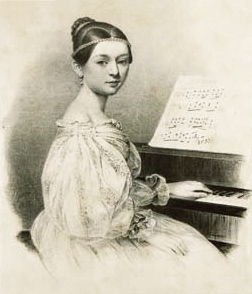
The Piano Concerto in A minor, Op. 7, was composed by Clara Wieck, better known as Clara Schumann after her later marriage to Robert Schumann. She completed her only finished piano concerto in 1835, and played it first that year with the Leipzig Gewandhaus Orchestra, conducted by Felix Mendelssohn.
Sergei Prokofiev composed his Divertissement Op.43 for small orchestra. The work is closely related to his ballet, Trapèze. He also made a piano transcription of the work with subtitles for each movement.
References
- ↑ McAllister, Rita; Guillaumier, Christina (2020-02-07). Rethinking Prokofiev. Oxford University Press. pp. 329–371. ISBN 978-0-19-067076-4.
- ↑ Hartopp, Guy (2019-02-15). Paris, a Concise Musical History. Vernon Press. p. 220. ISBN 978-1-62273-625-6.
- ↑ Furtwangler.fr Concert Description